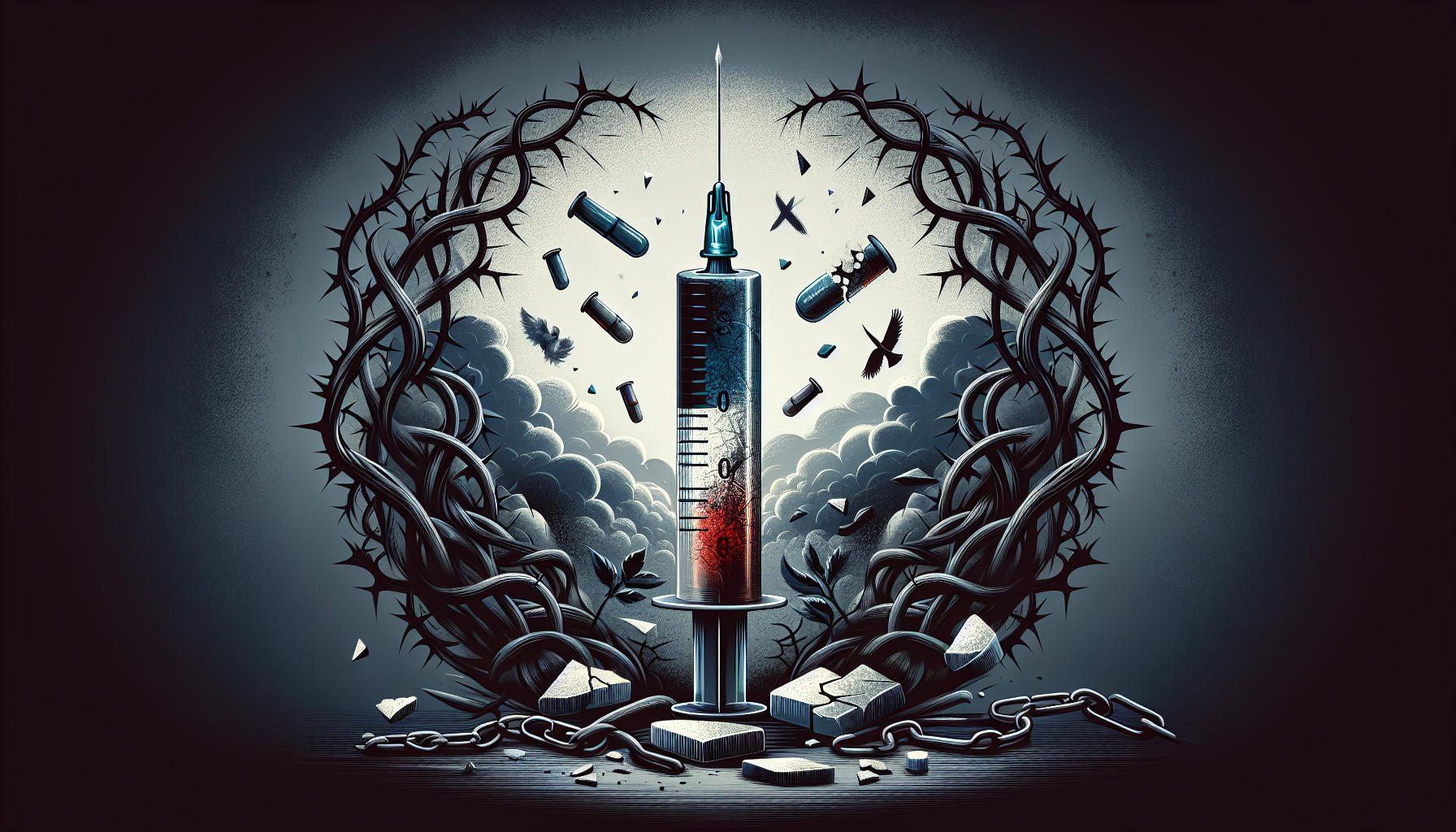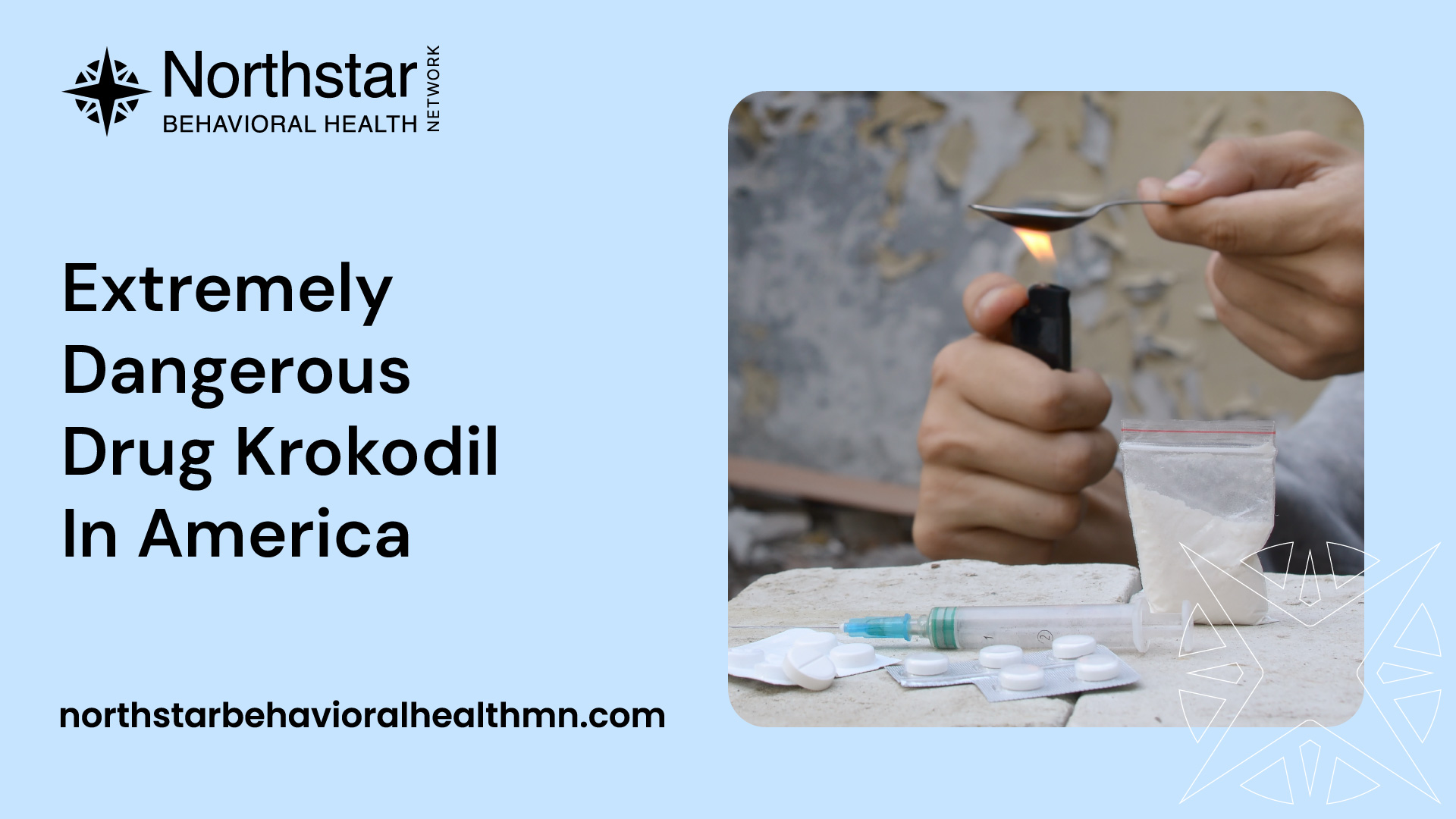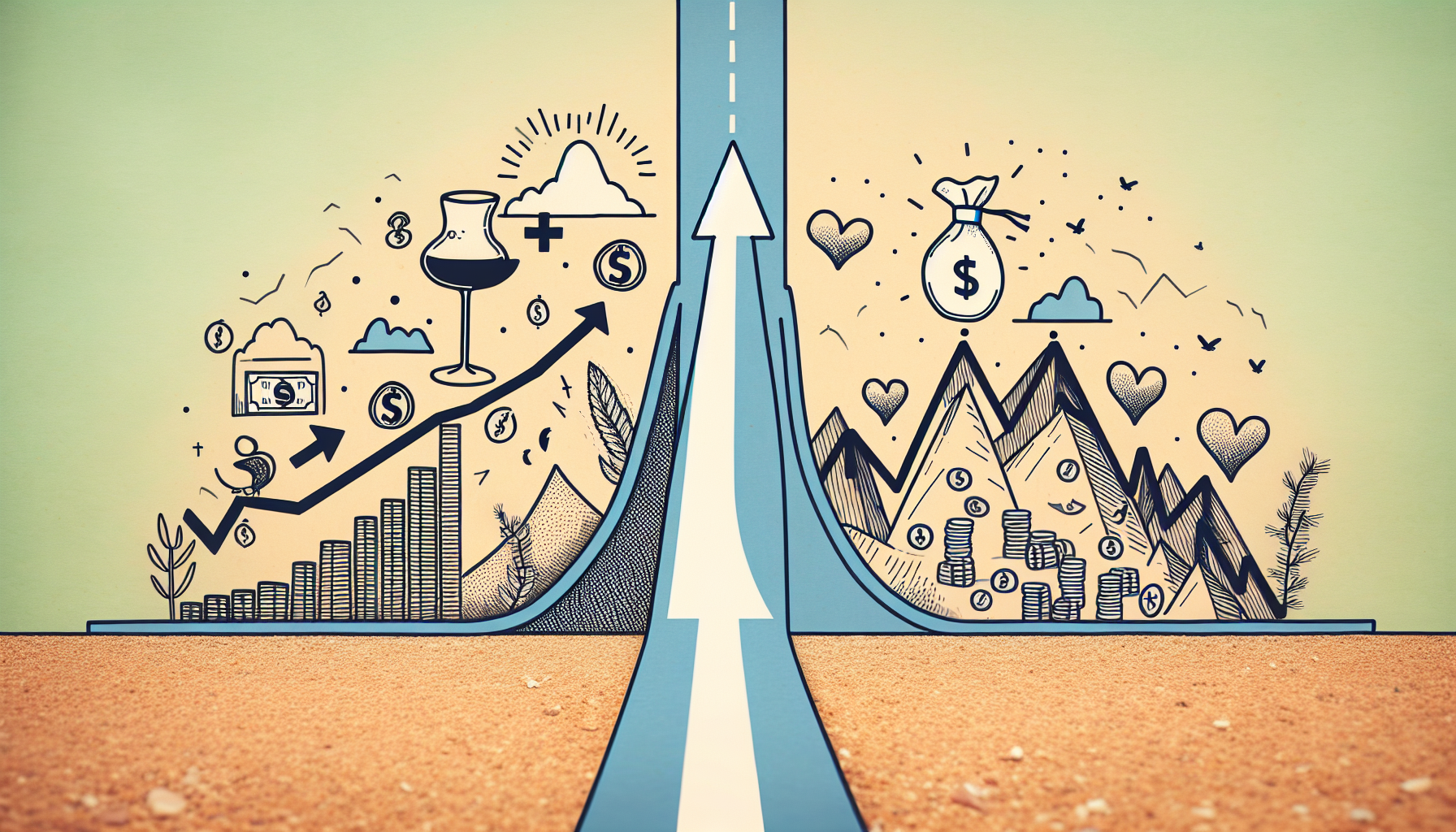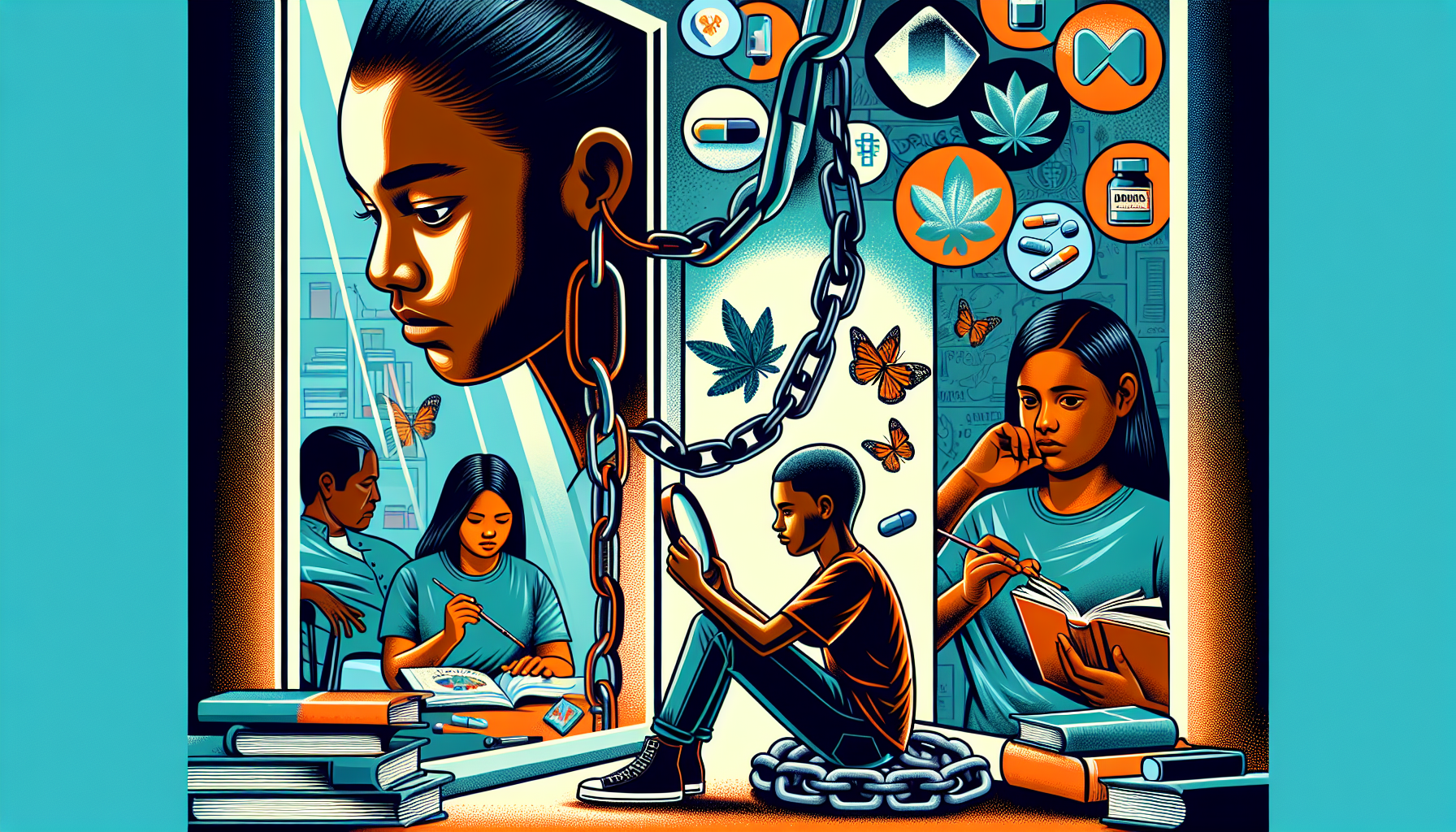September 2, 2024
Extremely Dangerous Drug Krokodil In America
Reclaim lives affected by the dangerous drug Krokodil in America.


Understanding Krokodil Addiction
Krokodil addiction is a serious issue that has devastating effects on individuals and communities. In order to address this problem, it is crucial to have a clear understanding of what krokodil is and the harmful consequences of its use.
What is Krokodil?
Krokodil, also known as desomorphine, is a synthetic opioid drug that originated in Russia. It is derived from codeine, a medication commonly used to treat pain. However, krokodil is not produced in controlled pharmaceutical laboratories, but rather in makeshift labs using readily available and highly toxic ingredients, such as codeine, gasoline, paint thinner, and other chemicals.
The name "krokodil" (meaning "crocodile" in Russian) comes from the drug's notorious side effect of causing severe tissue damage and rotting of the skin, resembling the rough and scaly skin of a crocodile. This is due to the toxic impurities present in the homemade production process. It is important to note that krokodil is highly dangerous and is considered one of the most dangerous drugs in the world.
The Devastating Effects of Krokodil Use
The use of krokodil has devastating effects on both the physical and mental health of individuals. The toxic chemicals used in its production can cause severe damage to the body, leading to tissue necrosis, gangrene, and even limb amputation. The skin around the injection site becomes discolored, scaly, and ulcerated, giving rise to the drug's infamous nickname.
Moreover, krokodil is highly addictive, and its abuse can lead to a rapid deterioration in an individual's overall well-being. Users often experience intense cravings, which can lead to a dangerous cycle of drug-seeking behavior. The drug's potency and unpredictable composition make it even more hazardous, as users can never be sure of its strength or purity.
In addition to the physical effects, krokodil addiction takes a toll on mental health as well. Users may suffer from anxiety, depression, cognitive impairments, and social isolation. The destructive nature of krokodil addiction can also strain relationships, disrupt families, and negatively impact communities.
Understanding the severity of krokodil addiction is crucial in raising awareness and providing support to those affected. By shedding light on the dangers of this extremely dangerous drug, we can work towards finding effective solutions and helping individuals on their road to recovery. To learn more about seeking help for krokodil addiction and available treatment options, continue reading our article on resolving to be sober.
The Rise of Krokodil in America
Krokodil, an extremely dangerous drug, has made its way into America, leaving a trail of devastation in its wake. Understanding the history of Krokodil in the United States and its impact on communities is crucial in addressing this alarming issue.
History of Krokodil in the United States
Krokodil, also known as desomorphine, originated in Russia in the early 2000s. Initially, it gained popularity as a cheap alternative to heroin due to its easy synthesis using codeine, a readily available opioid medication. However, its production process involves mixing codeine with toxic chemicals, such as gasoline, paint thinner, and hydrochloric acid. As a result, Krokodil earned its reputation as the "flesh-eating drug" due to the severe tissue damage it causes.
While Krokodil initially remained largely confined to Russia, reports of its presence in the United States emerged in the mid-2010s. Although the exact extent of Krokodil use in the United States is difficult to determine due to its clandestine nature, its presence highlights the alarming spread of this dangerous substance.
Impact of Krokodil on Communities
The impact of Krokodil on communities in the United States cannot be overstated. The devastating consequences of Krokodil use extend beyond the physical effects experienced by individuals. This drug poses significant challenges to public health and safety.
The destructive nature of Krokodil leads to severe health complications for users. Injection sites can become infected, resulting in open sores, tissue damage, and, in extreme cases, gangrene. Moreover, the toxic chemicals used in its production can cause damage to internal organs, leading to long-term health problems.
Individuals who become addicted to Krokodil often face a harrowing journey to recovery due to the drug's potency and the severe physical and psychological dependence it creates.
Communities bear the brunt of the consequences as well. The presence of Krokodil not only strains healthcare systems but also contributes to increased crime rates and social instability. The cycle of addiction and its associated challenges can lead to strained relationships, financial hardships, and a decline in overall community well-being.
To combat the rise of Krokodil in America, it is crucial to raise awareness, provide education about the dangers of this drug, and offer accessible treatment options for those struggling with addiction. By focusing on prevention, support, and resources, communities can work together to address this alarming issue and help individuals reclaim their lives from the grip of Krokodil addiction.
Road to Recovery
Recovering from a Krokodil addiction can be a challenging journey, but it is possible with the right support and resources. The road to recovery starts with seeking help and exploring the available treatment options.
Seeking Help for Krokodil Addiction
Acknowledging the need for help is the first step towards recovery. If you or someone you know is struggling with Krokodil addiction, it's essential to reach out for professional assistance. There are various resources available to provide guidance and support throughout the recovery process.
One of the first places to start is by contacting a healthcare professional or addiction specialist. They can assess the individual's condition and recommend appropriate treatment options. Additionally, support groups, such as Narcotics Anonymous (NA), can offer a safe and understanding environment for individuals to share their experiences and find support from others who have overcome addiction. Our article on seek the sober life provides further information on seeking help for addiction.
Treatment Options and Resources
There are several treatment options available to individuals seeking recovery from Krokodil addiction. The most effective approach may vary depending on the individual's specific needs and circumstances. Some common treatment options include:
- Inpatient Rehabilitation: Inpatient rehabilitation programs provide a structured and supportive environment for individuals to focus solely on their recovery. These programs typically offer a combination of individual therapy, group counseling, and educational sessions.
- Outpatient Programs: Outpatient programs allow individuals to receive treatment while residing at home. They involve regular therapy sessions and support group meetings, providing flexibility for those who cannot commit to a full-time residential program.
- Medication-Assisted Treatment: In some cases, medication-assisted treatment may be recommended to manage withdrawal symptoms and reduce cravings. Medications such as buprenorphine, naloxone, or methadone can help individuals gradually taper off Krokodil and minimize the risk of relapse.
- Counseling and Therapy: Individual counseling and therapy sessions are crucial components of the recovery process. They provide a safe space for individuals to explore the underlying causes of addiction, develop coping strategies, and learn healthier ways of managing emotions and stress.
- Support Groups: Support groups, like NA, offer a network of individuals who have faced similar challenges and can provide encouragement and guidance. These groups can be particularly beneficial during and after the formal treatment period.
It's important to remember that recovery is a unique journey for each individual. The combination of treatment options may vary based on personal circumstances and preferences. It's recommended to consult with healthcare professionals or addiction specialists to determine the best course of action.
In addition to professional treatment, there are various resources available to support individuals on their recovery journey. These include recovery gifts that support sobriety, educational materials, online forums, and helplines. By utilizing these resources and building a strong support system, individuals can increase their chances of successful recovery and long-term sobriety.
Support and Encouragement
When embarking on the journey of recovery from Krokodil addiction, building a strong support system is essential. Surrounding yourself with understanding and empathetic individuals can provide the encouragement and guidance needed to overcome the challenges that may arise along the way.
Building a Support System
Building a support system is crucial in maintaining long-term sobriety. Here are some steps to help you build a solid support system:
- Reach out to loved ones: Share your decision to recover with close friends and family members who have shown support and understanding in the past. They can serve as a source of strength and motivation throughout your journey.
- Join support groups: Consider joining support groups or 12-step programs such as Narcotics Anonymous (NA) or SMART Recovery. These groups provide a safe and non-judgmental environment where you can connect with others who have faced similar challenges. Sharing experiences, receiving guidance, and gaining insights from others can be incredibly valuable.
- Therapy and counseling: Seek professional help from therapists or addiction counselors who specialize in substance abuse. They can provide individualized guidance, coping strategies, and mental health support tailored to your specific needs. Therapy sessions can help you address underlying issues that may have contributed to your addiction and provide tools to navigate through recovery successfully.
- Online communities: Utilize online platforms and forums dedicated to addiction recovery. These communities allow you to connect with others, access valuable resources, and receive support from individuals who have experienced or are currently experiencing similar struggles. Remember to be cautious and only engage with reputable and trustworthy online communities.
Overcoming Challenges in Recovery
Recovery from Krokodil addiction can be challenging, but with the right support, you can overcome these obstacles. Here are some tips to help you navigate the challenges in your recovery journey:
- Identify triggers: Recognize the situations, emotions, or people that may trigger cravings or temptations to use Krokodil. By identifying these triggers, you can develop strategies to cope with them effectively and avoid relapse. Consider creating a relapse prevention plan with the help of your support system.
- Practice self-care: Prioritize self-care activities that promote physical, emotional, and mental well-being. Engage in activities such as regular exercise, practicing mindfulness or meditation, getting sufficient sleep, and maintaining a balanced diet. Taking care of yourself holistically can improve your overall resilience and make it easier to navigate the challenges of recovery.
- Seek professional help: If you find yourself struggling with intense cravings, emotional distress, or other significant challenges in your recovery, don't hesitate to seek professional help. Therapists, counselors, and addiction specialists can provide guidance, support, and additional tools to help you overcome these hurdles.
- Celebrate milestones: Acknowledge and celebrate your achievements along the path to recovery. Each step, no matter how small, is a significant accomplishment. Celebrating milestones can boost your motivation and reinforce your commitment to staying sober.
Remember, recovery is a unique journey, and everyone's experience is different. Surrounding yourself with a strong support system and seeking professional help when needed can greatly increase your chances of long-term success. Stay committed, be patient with yourself, and embrace the support and encouragement available to you.
Finding Hope and Healing
Recovering from addiction to an extremely dangerous drug like Krokodil can be a challenging journey. However, it is important to remember that there is hope for those who are willing to seek help and embrace a sober lifestyle. In this section, we will explore stories of recovery and redemption, as well as the importance of embracing a sober lifestyle.
Stories of Recovery and Redemption
Stories of individuals who have successfully overcome their addiction to Krokodil inspire hope and show that recovery is possible. These stories serve as a reminder that no matter how severe the addiction may be, with determination, support, and the right treatment, individuals can reclaim their lives and find a path to healing.
Listening to these stories can provide encouragement and motivation to those who are struggling with addiction. They offer insight into the challenges faced during recovery and highlight the strength and resilience required to overcome addiction. If you're looking for more inspiring stories of recovery, consider exploring our article on recovery gifts that support sobriety.
Embracing a Sober Lifestyle
Embracing a sober lifestyle is a fundamental aspect of the recovery process. It involves making a conscious decision to abstain from using substances and actively working towards physical, mental, and emotional well-being. Here are some key elements of embracing a sober lifestyle:
- Support System: Building a supportive network of friends, family, and professionals who understand and encourage your recovery journey is crucial. They can provide guidance, accountability, and emotional support during challenging times. For tips on building a support system, check out our article on setting a good example.
- Healthy Coping Mechanisms: Developing healthy coping mechanisms is essential for maintaining sobriety. Engaging in activities such as exercise, meditation, art, or hobbies can help reduce stress and replace unhealthy behaviors. It is important to find activities that bring joy and fulfillment without the need for substances.
- Ongoing Treatment and Therapy: Continuing treatment and therapy even after initial recovery is important. This may include individual counseling, group therapy, or participation in support groups such as Alcoholics Anonymous (AA) or Narcotics Anonymous (NA). These resources provide guidance, accountability, and a sense of community.
- Avoiding Triggers: Identifying and avoiding triggers that may lead to relapse is essential in maintaining sobriety. Triggers can be people, places, or situations that are associated with substance use. By recognizing and avoiding these triggers, individuals can minimize the risk of relapse.
Embracing a sober lifestyle is a lifelong commitment, and it requires dedication, perseverance, and ongoing self-reflection. Remember that recovery is a personal journey, and seeking professional help and support is crucial. If you or someone you know is struggling with addiction, reach out to the appropriate resources and treatment centers to start the journey towards healing and sobriety.
Spreading Awareness and Prevention
In order to combat the devastating effects of Krokodil use and prevent its spread, it is crucial to focus on spreading awareness and implementing preventive measures. Educating others about Krokodil and taking steps to prevent its use can make a significant impact in reducing its harm.
Educating Others About Krokodil
One of the most effective ways to combat the use of Krokodil is through education. By raising awareness about the dangers and consequences of Krokodil use, we can help individuals make informed decisions and understand the risks associated with this extremely dangerous drug.
Educational campaigns, community outreach programs, and school-based initiatives can play a pivotal role in disseminating accurate information about Krokodil. These efforts can focus on highlighting the harmful effects of Krokodil on physical and mental health, as well as the potential legal consequences of using and distributing the drug.
Furthermore, it is essential to provide resources and educational materials that discuss the signs and symptoms of Krokodil use, as well as the available treatment options. By equipping individuals with knowledge, we empower them to recognize the dangers and seek help if needed. Internal links to relevant articles, such as resolving to be sober and recovery gifts that support sobriety, can provide further information and support.
Preventing the Spread of Krokodil Use
Prevention is key in addressing the spread of Krokodil use. Efforts should focus on multiple levels, including individuals, families, communities, and policymakers. By implementing preventive measures, we can reduce the demand for Krokodil and create an environment that discourages its use.
At the individual level, it is important to promote healthy lifestyles and provide alternatives to drug use. Encouraging positive coping mechanisms, such as engaging in hobbies, exercise, and social activities, can help individuals steer clear of substance abuse. Additionally, open and honest communication within families about the dangers of drug use can create a supportive environment that encourages healthy choices.
On a community level, it is crucial to establish support networks and resources for individuals struggling with substance abuse. This can include providing access to counseling services, support groups, and treatment facilities. Collaboration with local organizations, healthcare providers, and law enforcement agencies can help create a comprehensive approach to prevention.
Policymakers also play a vital role in preventing the spread of Krokodil use. They can enact and enforce legislation that targets the production, distribution, and sale of Krokodil. This can include regulating the ingredients used in the production of the drug, implementing stricter penalties for those involved in its distribution, and supporting initiatives that provide funding for prevention and treatment programs.
By spreading awareness, educating others, and implementing preventive measures, we can work towards reducing the spread of Krokodil use and protecting individuals from its devastating effects. Together, we can make a difference in promoting a drug-free and healthier society.

.jpg)




.jpg)

